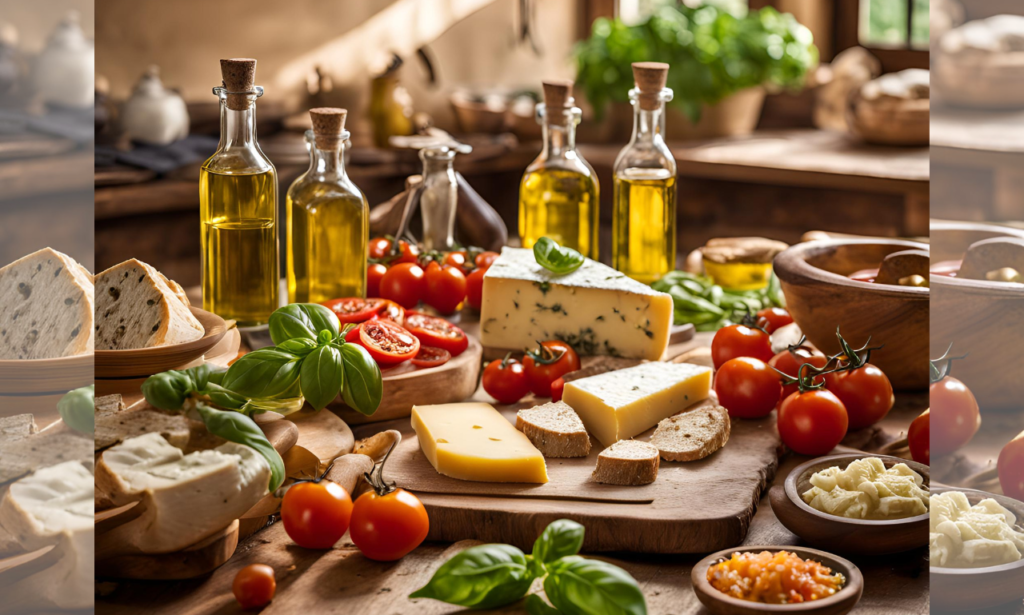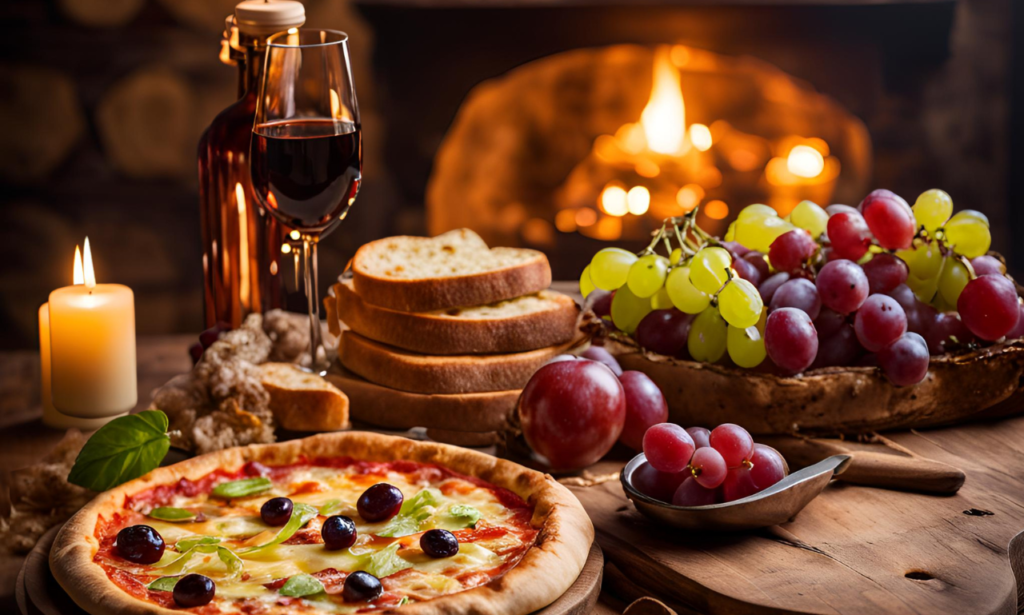
Italian gastronomy transcends the simple act of eating; it is a true cultural expression reflected in every dish, every ingredient. For Italians, eating is not merely a biological necessity, but a ritual of celebrating life. Every meal tells a story of millennia-old traditions, passions that span generations, and a deep connection to the land and its products. Italian cuisine, therefore, is a sensory experience that goes far beyond flavors: it is a way to experience the history and soul of a country.
A Culinary Journey Through the Regions of Italy
Italy is a country of contrasts, and its gastronomy reflects this in a unique way. From the alpine cold in the north to the Mediterranean warmth in the south, each Italian region brings with it distinct flavors that form a mosaic of traditions and influences.
In the north, the cuisine is marked by heartier dishes, ideal for the cold climate. Creamy risottos and polenta are classic ingredients that warm the heart. The use of cured cheeses such as Parmigiano Reggiano and Gorgonzola is a feature of this region, as are butter- and cream-based dishes. In places like Piedmont, truffles – one of the most valued ingredients in Italian cuisine – are proudly celebrated.
In the center, Tuscany stands out. Here, simplicity is the greatest luxury: grilled meats, fresh vegetables, rustic breads, and full-bodied wines are the foundation of meals. The people of Tuscany have a deep love for fresh, local ingredients, with a diet focused on “cucina povera,” or simple cooking, which celebrates the rusticity and quality of food.
In the south, Mediterranean influences are predominant. The generous use of olive oil, fresh tomatoes, and seafood creates light and flavorful dishes. Dishes like Neapolitan pizza, born in the streets of Naples, and spaghetti alla puttanesca, with its vibrant tomato sauce, capers, and olives, have become international icons of Italian cuisine.
Ingredients That Tell Stories
The strength of Italian gastronomy lies in its intimate relationship with local ingredients. Each region has its exclusive products, which not only define its flavors but also tell the story of its people. In the north, Parmigiano Reggiano, Gorgonzola, and mascarpone are essential, representing centuries of tradition in the production of artisanal cheeses. In the south, tomatoes, like the famous San Marzano, are carefully grown, ripening under the Mediterranean sun and developing an unmistakable sweetness.
Italian olive oil is another cultural symbol of the country, with over 500 varieties of olive trees producing oils of unique flavors. Italy is, in fact, the largest exporter of olive oil in the world, and its varieties are as diverse as the regions that produce them. Every spoonful of Italian olive oil carries with it a heritage of thousands of years of history and tradition.
Furthermore, truffles, especially those from Piedmont and Umbria, are considered luxury delicacies. These precious “jewels” of the earth are used to give a special touch to simple dishes, like pasta and eggs, transforming them into gastronomic experiences of another level.
The Preparation: A True Art
In Italy, cooking is a true art, a practice that demands time, patience, and, above all, respect for the ingredients. No matter how simple the dish, it is always prepared with attention to detail. Fresh pasta, handmade with high-quality flour and fresh eggs, is a clear example of this dedication. Many Italians consider pasta a true passion, and the techniques for making it vary from region to region.
Italian sauces, like Bolognese sauce or pesto alla genovese, are prepared slowly, with a careful combination of herbs and fresh ingredients. In many Italian homes, preparing a dish is a family gathering occasion, where recipes are passed down from generation to generation, keeping the culinary tradition alive.

The Global Influence of Italian Cuisine
Italian gastronomy is undoubtedly one of the most influential in the world. In nearly every country, there are Italian restaurants offering both traditional dishes and modern reinterpretations of the country’s cuisine. In Brazil, for example, pizza and pasta have become everyday foods, eaten on any day of the week, whether at a simple meal or a large family event.
The global popularity of Italian cuisine can be attributed to its ability to unite simplicity and sophistication. Recipes may be simple, but with quality ingredients, and at the same time, sophisticated, with a delicate combination of flavors and aromas that captivate palates around the world. The concept of “cucina italiana” transcends geographical borders, becoming a symbol of hospitality, tradition, and quality.
Conclusion
Italian gastronomy is undoubtedly one of the greatest cultural heritages in the world. Each dish is a journey through time, bringing with it centuries of tradition, innovation, and a passion for quality food. To truly understand Italy, one must experience its food and live its history through its flavors, aromas, and textures. When savoring an Italian dish, you are not just eating; you are connecting with an essential part of Italian culture. Buon appetito!
To truly understand Italy, one must experience its food and live its history through its flavors, aromas, and textures.
Deborah Jappelli